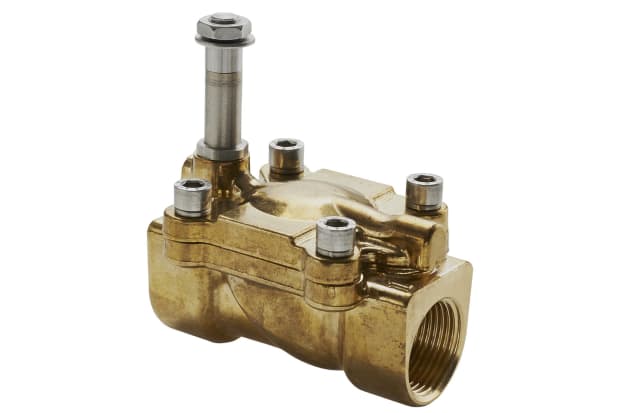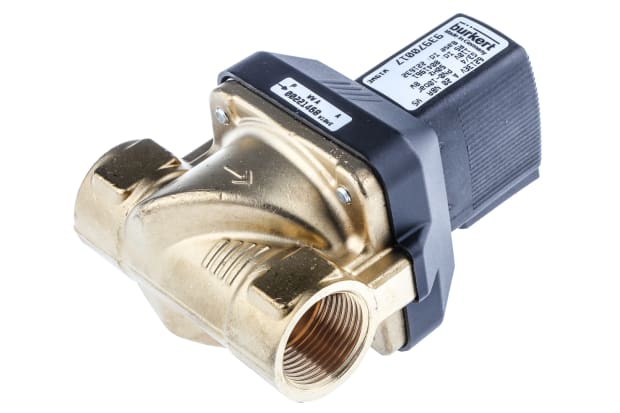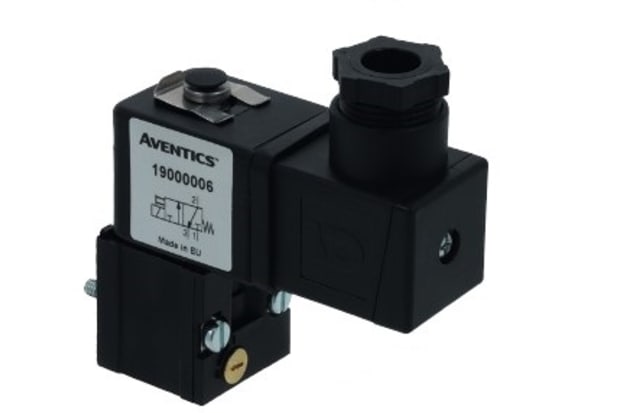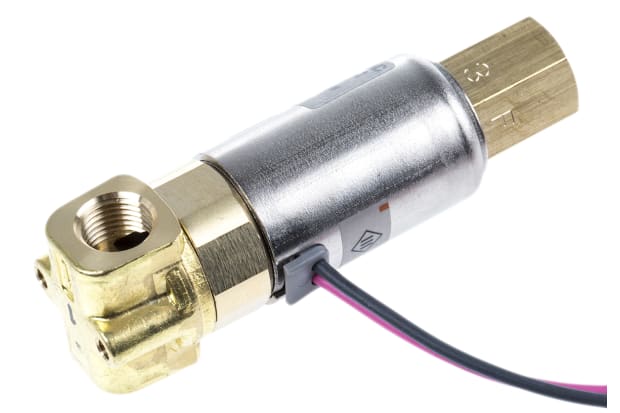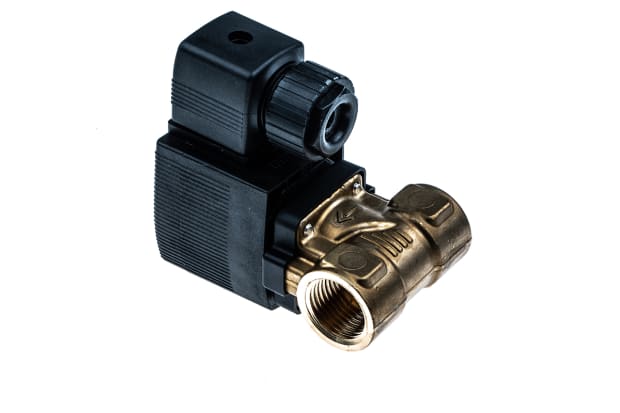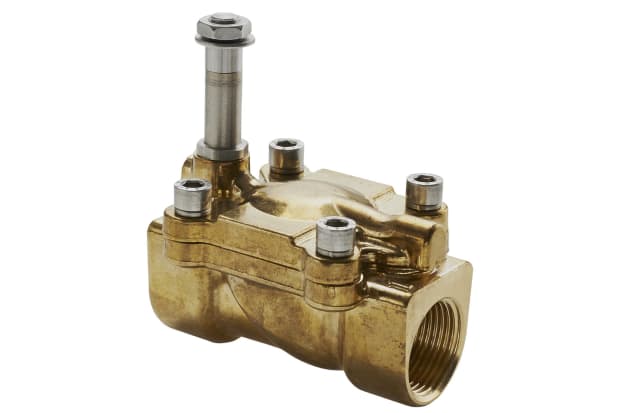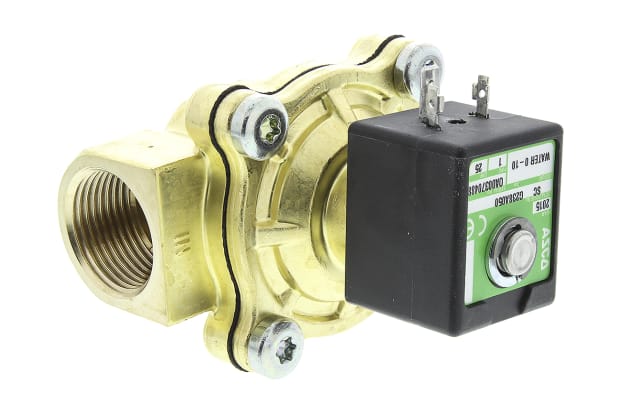- Published 21 Aug 2024
- Last Modified 21 Aug 2024
- 14 min
Understanding Solenoid Valves and Their Applications

This article provides an in-depth exploration of solenoid valves, detailing their construction, operation, and common applications. Learn how these essential components function and what to consider when selecting the right solenoid valve for your needs.
What is a Solenoid Valve?
A solenoid valve is an electromechanically operated valve that controls the flow of liquids or gases in various applications. It consists of a solenoid, which is an electric coil with a movable ferromagnetic core (plunger) in its center. When the solenoid is energised, it creates a magnetic field that pulls the plunger into the coil, actuating the valve mechanism and allowing or stopping the flow of fluid.
Solenoid valves are versatile and widely used in industrial, commercial, and residential settings for precise fluid flow control. They are available in various types, including direct-acting, pilot-operated, and 3-way valves, which are selected based on factors such as pressure, flow rate, and fluid compatibility.
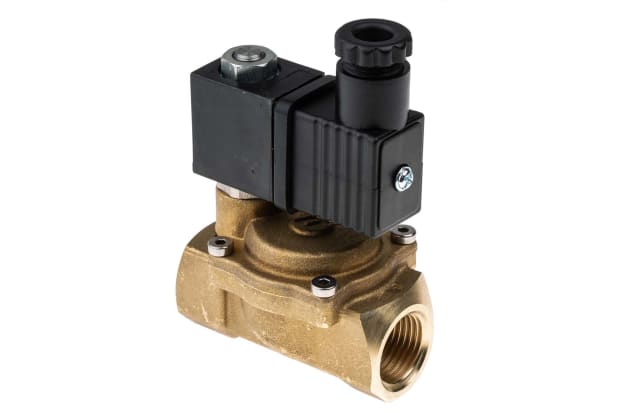
One of the key advantages of solenoid valves is their automatic operation, which eliminates the need for manual intervention. Engineers can install solenoid valves in remote locations to control and monitor gas or fluid flow automatically, making them an essential component in modern automation and control systems.
Solenoid valves are used in a wide range of applications, including industrial controls, pneumatic systems, fluid power hydraulic systems, water supply, air conditioning, and more. They play a crucial role in regulating the flow of air, gas, water, and oil, ensuring process efficiency and safety in various industries.
What Does a Solenoid Valve Look Like?
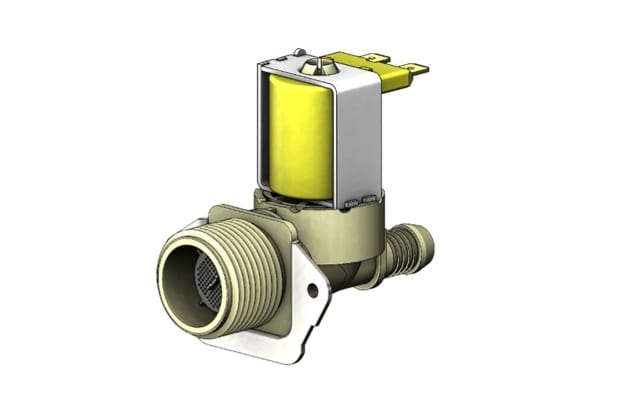
A solenoid valve typically features a compact and modular design that can vary based on its type and application. The most common configurations include poppet and spool formats, but specialised versions are also available to meet specific operational demands. The valve is primarily constructed from several key components, which work together to control the flow of fluids or gases effectively. Here are the main parts you would find in a typical solenoid valve:
- Valve Body: This is the main structural component of the solenoid valve, housing the internal mechanisms. It includes essential features such as input and output ports, valve seats, and the orifice that regulates flow. The valve body is often made from durable materials like brass, stainless steel, or plastic, depending on the application and the type of fluid being controlled.
- Electrical Solenoid Coil: The solenoid coil is an electromagnet composed of copper windings. When electrical current flows through the coil, it generates a magnetic field that activates the plunger, allowing the valve to open or close. This component is crucial for the valve's operation and is designed to withstand varying electrical loads.
- Coil Enclosure or Housing: Typically made from non-ferrous metal, this cylindrical enclosure protects the solenoid coil and provides a channel for the plunger's movement. It is sealed at one end to ensure that the internal components are safeguarded from external elements.
In addition to these primary components, more advanced solenoid valve systems may include:
- DIN Terminals and Connectors: These allow for flexible electrical connections and signal outputs, enabling integration with various control systems.
- Plunger and Spring Assembly: The plunger is a movable component that directly interacts with the flow of the fluid. It is usually accompanied by a spring that returns it to its original position when the coil is de-energised.
- Seals and Gaskets: These components prevent leaks and ensure that the valve operates efficiently under pressure. They are made from materials compatible with the fluids being controlled.
What are Solenoid Valves Made of?
Modern solenoid valves are constructed from a variety of robust materials that are designed to withstand the demands of different applications while ensuring reliable performance. The choice of materials is crucial, as they must be compatible with the fluids or gases they control to prevent contamination and ensure longevity. The most common materials used in the manufacturing of solenoid valves include:
Brass Solenoid Valves
Known for its excellent corrosion resistance, brass is commonly used in solenoid valves that handle neutral media, such as water and air. Its durability and ability to withstand high temperatures make it a versatile choice for many applications.
Stainless Steel Solenoid Valves
This material is favoured for its exceptional resistance to chemicals, high temperatures, and pressure. Stainless steel solenoid valves are ideal for harsh environments and aggressive media, making them suitable for industrial applications where durability is paramount.
Aluminium Solenoid Valves
Lightweight yet strong, aluminium is often used for solenoid valve housings. Its thermal properties and cost-effectiveness make it a popular choice in applications where weight reduction is essential, such as in automotive and aerospace industries.
PVC Solenoid Valves
PVC is a cost-efficient option that offers good resistance to corrosive media, including acids and bases. It is commonly used in applications involving water treatment and chemical processing.
Solenoid Valve Applications
Solenoid valves are designed to control the flow of a wide range of liquids and gases, making them suitable for various industrial, commercial, and residential applications. Their ability to provide precise, reliable, and automated control of fluid and gas flow makes them essential in modern automation and control systems. These valves are available in numerous configurations to accommodate the specific requirements of different environments and media. Some of the common applications of solenoid valves include:
Industrial and Laboratory Applications
- Hot and Cold Liquids: Solenoid valves are used to manage the flow of both hot and cold fluids in industrial processes, ensuring precise temperature control and efficient operation.
- Compressed Air: These valves play a crucial role in pneumatic systems, regulating the flow of compressed air for powering tools, machinery, and automated equipment.
- Steam: Solenoid valves are essential in applications involving steam, such as sterilisation processes, heating systems, and autoclaves, where accurate flow control is necessary.
- Mineral, Natural, and Synthetic Oils: Solenoid valves are compatible with a wide range of oils, both with and without additives, making them suitable for lubrication systems and hydraulic applications.
- Aqueous Solutions: These valves are widely used in water treatment, chemical processing, and pharmaceutical manufacturing, ensuring the safe and efficient control of aqueous solutions.
- Aggressive and Combustible Gases: Specialised solenoid valves are designed to handle hazardous gases, providing reliable operation in environments where flammable or corrosive substances are present.
Domestic and Commercial Applications
- Heating and Water Flow Systems: Solenoid valves are used in boilers, water heaters, and plumbing systems to regulate water flow and prevent backflow.
- Lawn Sprinklers and Irrigation Networks: These valves are essential components in automated irrigation systems, controlling the flow of water to ensure efficient watering of gardens, lawns, and agricultural fields.
- Car Washes: Solenoid valves are used to control the flow of water and cleaning solutions in car wash systems, ensuring a consistent and effective cleaning process.
- Swimming Pool Drainage and Top-Up Controls: These valves are used in swimming pool systems to maintain proper water levels and facilitate drainage.
- Medical and Dental Equipment: Solenoid valves are used in various medical devices, such as nebulizers, dental chairs, and surgical tools, to regulate the flow of fluids and gases.
- Refrigeration and Air Conditioning: These valves are used in HVAC systems to control the flow of refrigerants, ensuring efficient cooling and heating in residential, commercial, and industrial settings.
- Paintball Guns and Compressed Air Tools: Solenoid valves are used in paintball guns and other compressed air tools to regulate the flow of air, providing consistent performance and rapid response.
- Calibration and Test Stands: These valves are used in calibration and testing equipment to ensure accurate and repeatable fluid flow measurements.
In terms of media compatibility and operational fundamentals, solenoid valves come in various types, each designed for specific applications. Some of the common variants include:
- Water Solenoid Valve: Specifically designed for controlling the flow of water in various applications.
- Solenoid Gas Valve: Used for regulating the flow of gases, such as natural gas, propane, and air.
- Solenoid Air Valve: Essential for controlling the flow of compressed air in pneumatic systems.
- Pneumatic Solenoid Valve: Used to actuate pneumatic cylinders and valves, providing precise control over the direction and speed of movement.
- Hydraulic Solenoid Valve: Employed in hydraulic systems to regulate fluid flow, pressure, and direction, ensuring efficient power transmission and control.
- High Pressure Solenoid Valves: Designed to withstand high-pressure environments, these valves are suitable for applications involving elevated pressures.
- High Performance/Fast-Acting Solenoid Valve: Ideal for applications requiring rapid response times, such as in high-speed automation and control systems.
How Does a Solenoid Valve Work?
Solenoid valves are essential flow control devices that can either restrict or enable the flow of liquids and gases, depending on their design and whether they are in an activated (energised) state. Understanding how a solenoid valve operates is crucial for effectively utilising this technology in various applications.
In a typical solenoid valve, such as those using a ‘spool’ or ‘poppet’ design, the valve is connected to a plunger or a pivoted armature, which is usually spring-mounted. This plunger resides within a hollow tube known as the solenoid ‘core’. When the solenoid is electrically energised, the coil wrapped around the core generates a magnetic field. This magnetic field influences the plunger's movement, allowing it to either push or pull the valve in a specific direction, ultimately resulting in the opening or closing of the flow path. The exact operation whether the solenoid opens or closes the valve, depends on the specific configuration of the valve and solenoid controller, as well as its normal operating state.
Normally Open and Normally Closed Solenoid Valves
Solenoid valves can be categorized as either ‘normally open’ or ‘normally closed’:
- Normally Open Valves: These valves remain open when the solenoid is not receiving an electrical signal, allowing maximum flow through the system. When an electrical input signal is applied, the solenoid generates electromagnetic force that closes the valve, thereby controlling the flow. Once the signal is removed, the valve returns to its open position, restoring flow.
- Normally Closed Valves: In contrast, normally closed valves are shut when not energised. When an electrical signal is applied, the solenoid opens the valve, allowing fluid or gas to flow. This functionality is crucial in applications where flow should be restricted by default.
Complex Solenoid Valves
Certain solenoid valve models incorporate advanced technologies and additional components to provide more sophisticated functionalities. These may include features for managing proportional flow or pressure control, achieved through the sensitivity of the coil to varying input signal strengths. It’s important to note that in fluid dynamics, the term ‘normally open’ in solenoid valves has a different implication than in electronic systems.
Two-Way Solenoid Valves
Two-way or two-port solenoid valves are among the most common types in use. They control one inlet and one outlet port, opening or closing the valve in response to an electrical activation signal. These valves are often referred to as shut-off solenoids and are available in both normally open and normally closed configurations, depending on the requirements of the specific application.
Three-Way Solenoid Valves
Three-way or three-port solenoid valves feature three input/output ports and two valve seals. In their default state, one port remains open while the other is closed. Upon receiving an electrical signal, the states of these ports are reversed, allowing for the diversion of flow between different channels, based on how the ports are connected within the larger pipeline system.
Direct Operated Solenoid Valves
Direct operated solenoid valves, also known as direct acting valves, function by having the energised solenoid directly actuate the valve sealing piston or armature. The ability of these valves to control flow depends on the power rating of the solenoid, which is determined by the strength of the electromagnetic field generated.
Pilot Operated Solenoid Valves
Pilot operated solenoid valves utilise the energy stored in pressurised fluid or gas to open or close the valve. These can be internally or externally piloted. Internally piloted solenoid valves are typically used in high-pressure systems, where pressure differentials primarily facilitate valve operation. Externally piloted solenoid valves, on the other hand, depend on a secondary component, such as a spring or armature, to assist in the opening or closing of the valve, making them suitable for lower pressure applications.
Key Considerations for Selecting a Solenoid Valve
When it comes to selecting a solenoid valve, the extensive variety of available types reflects the component's remarkable versatility. This diversity enables users to find a valve that precisely matches the intended application and operational environment. Here are the key factors to consider when purchasing a solenoid valve to ensure optimal performance and compatibility:
- Flow Rate: It is crucial to choose a valve that aligns with the required flow rate of your system. A valve that is too large may lead to inefficiencies and increased costs, while a valve that is too small can hinder performance and fail to provide adequate actuation. Ensure that the valve's rated flow capacity meets the specific demands of your application.
- Media Compatibility: Selecting the appropriate valve for the type of media it will control is essential. Whether dealing with water, air, steam, oil, fuel, or other specific liquids and gases, the valve material must withstand the chemical properties and characteristics of the media to prevent degradation or contamination.
- Pressure Ratings: Operating pressure significantly influences the overall flow rate of a solenoid valve. It's vital to ensure that the valve can handle both the maximum and minimum pressure requirements of your system. Always refer to manufacturer specifications to verify that your operating parameters fall within the safe limits.
- Temperature Range: Consider the temperature conditions that the solenoid valve will be exposed to. The materials used in the valve construction must be suitable for the expected temperature range to ensure reliable operation and longevity.
- Mounting and Fitting Types: The installation method is another critical factor. You may need specific adapters or fittings based on the type of pipeline where the valve will be installed. Common options include:
- Compression fittings for gas or water pipes
- Push-in or barb fittings for hoses
- PVC fittings for plastic conduits
- Various adapter types, such as sockets and reducer bushings
Proper sizing and power requirements are crucial for effective solenoid valve operation. This involves matching your specific usage needs with the valve’s performance specifications. Key areas to evaluate include:
- For Liquid Solenoid Valves: Consider the rated flow capability, flow rate (often expressed in volume per minute), inlet and outlet pressure, pressure drop across the valve, and the specific gravity of the fluid.
- For Gas Solenoid Valves: Additional considerations include gas temperatures at various stages of the pipeline, fluctuating flow rates (expressed in cubic feet per hour), and absolute pressures at both the inlet and outlet ports.
It’s also important to consider any special features that may be required for your application. These can include:
- Electrical Specifications: Ensure the valve’s voltage matches your power supply and that the connector is suitable for your installation.
- Seal Material: Choose seal materials based on the chemical properties of the media. Common options include NBR, EPDM, FKM (Viton), and PTFE (Teflon), each with unique resistance properties.
- De-energised State: Determine whether your application requires a normally open, normally closed, or bi-stable valve function.
- Circuit Function: Decide if your application needs a two-way or three-way solenoid valve based on the desired flow control.
- Response Time: The response time of the valve, which is the time it takes to open or close, is also a critical factor, especially in applications requiring rapid actuation.
Popular Brands
SMC
Explore the extensive range of solenoid valves available from leading brand SMC and shop online today with RS Singapore.
Burkert
Burkert solenoid valves are high-quality and long-lasting. Browse the full range and shop now.
RS PRO
See the full range of solenoid valves available from RS PRO, our own in-house line, and shop online today.
EMERSON – ASCO
With a wide range of products available to suit different applications, browse solenoid valves from EMERSON – ASCO and shop now.
